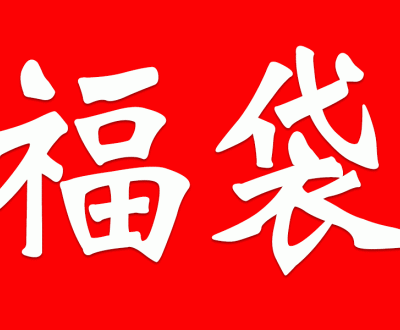Sales in Japan
The Western system of sales is different from Japan’s. Japan does not have specific periods throughout the year when companies can offer discounts. Each of them set its own discounts whenever it wants, such as supermarkets setting discounts each nigh on fresh produce.
On the other hand, during the traditional end-of-the-year break, numerous companies in Japan offer massive sales doubled with promotional offers. During the first days of the year, most big chain stores (since small stores take a break) sacrifice for this seasonal tradition.
But the famous annual bonus for salaried men ties in this period of discounts that leads to new electronic gear or purchases for pleasure for Japanese people not (yet?) celebrating Christmas has become rare in the past few years.
Fukubukuro, the "lucky bag"
Although Japan has a quite classical discount system, it has its own rules regarding discounts, know as 福袋 fukubukuro (literally "bag of luck") in Japan, or "lucky bag" internationally. This tradition dates back to the end of the 18th century, but it is obviously hard to exactly track its origin.
On the 1st of January and in the following days, clients rush for the 初売 hatsuuri, the first sell of the year. The star is the famous lucky bag because these bags can hide very limited editions: in the most loved stores, a fukubukuro’s stock can vanish in the opening hour’s first minutes!
Therefore, it is not surprising to find long lines in front of the stores. To raise attention, specific counters are planned, sometimes even on the sidewalks, with bags wrapped to sell more of them more quickly. It is rarely possible to book the bag online in advance.
As on video game, console or smartphone 📱 release days, lines start the previous day, and the press comes to interview those waiting in the cold winter night to test their luck. Apple benefited from this tradition for a long time before stopping this activity in 2016.
The spice of fukubukuro gives away which bags hide the content. For ¥1,000 (~US$6.33) to several tens of thousands yens, clients can hope to obtain bags with products whose real prices can total several times the price of the lucky bag! Muji, for example, does not hesitate to communicate about bags whose value is ten times more than their cost!
Beginning in 2019, JR Tokai continued the tradition it with train-related objects: some objects were even used by his staff. In one of its fukubukuro, among the most expensive (¥100,000 / ~US$633), one can even obtain a driver’s seat from the Shinkansen 🚅!
Among the most popular sectors, we can cite fashion, high-tech and food. Besides the hope of getting a great bargain, the client must accept that the discovered content might not correspond to his or her tastes. Sometimes, opening the bag reveals unsold goods, end of stocks or other goodies that we do not know what to do with.
A simple way to find testimonies about the content of a company’s fukubukuro is to search on Twitter, including the name of the desired brand, to check the annual tendency of its fukubukuro’s quality. But do not hesitate too long to decide whether to buy one!
Most of the big brands play off the lottery effect loved by the Japanese population to avoid disappointing people, but some of stores choose to show the inside of the lucky bag (sometimes even in advance). In that case, can it still be called “fukubukuro”?


